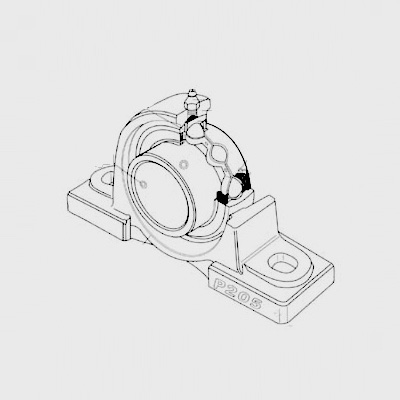
Nov . 04, 2024 16:44 Back to list
Guidelines for Installing Single Row Angular Contact Ball Bearings Efficiently
Installation of Single Row Angular Contact Ball Bearings
Single row angular contact ball bearings are widely used in various applications due to their ability to support both radial and axial loads in one direction. Their unique design allows for a higher speed operation and improved performance in constrained spaces. Proper installation is critical to ensuring their optimal performance, longevity, and reliability. This article will outline the techniques and best practices for installing single row angular contact ball bearings effectively.
Understanding the Basics
Angular contact ball bearings consist of an inner and outer ring, balls, and a cage. A key feature of these bearings is the contact angle, which allows them to accommodate axial loads in one direction while providing radial load support. Depending on the application, they can be arranged in pairs or single configurations to optimize performance.
Pre-Installation Considerations
Before installation, it’s essential to conduct a thorough inspection of both the bearing and the housing. Check for any signs of damage, contamination, or wear. Ensure that the components involved in the assembly are clean and free from any foreign particles that could cause premature failure. Having the right tools on hand, such as bearing pullers, hammers, and heat guns, can also facilitate a smoother installation process.
Steps for Installation
1. Preparation of Components - Clean the bearing seat, shaft, and housing thoroughly. Use a suitable solvent to remove grease, oil, and dust. - Check the fit between the bearing and the housing to ensure that tolerances are within specification. The fit may be interference or clearance fit depending on the specific design requirements.
2. Heating the Bearing - To ease installation, heat the outer race of the bearing. You can use an induction heater or an oven set at a low temperature (around 80-100°C or 176-212°F). Heating the bearing causes it to expand, allowing for easier installation. - Never heat the bearing to excessive temperatures, as this can degrade the lubricant and might alter the bearing's dimensional tolerances.
single row angular contact ball bearings installation

3. Installation of the Bearing - Carefully position the bearing onto the shaft or into the housing. Ensure that you are installing it in the correct orientation based on the design specifications. - Utilize a suitable method for pressing the bearing into place. Apply even pressure around the outer ring to avoid any skewing or damage to the bearing elements.
4. Alignment - Ensure that the bearing is properly aligned. Improper alignment can lead to premature failure due to uneven loading. Use a dial gauge or alignment tool to verify that the setup meets the required specifications.
5. Sealing and Lubrication - Once the bearing is securely installed, apply the appropriate lubricant. For angular contact ball bearings, ensure that you follow the manufacturer’s guidelines regarding the type and amount of lubricant. - If the bearing is sealed, ensure that the seal is properly fitted to avoid contamination.
6. Final Checks - After installation, rotate the bearing manually to check for any binding or abnormal noises. Any resistance might indicate misalignment or improper installation. - Allow time for the lubricant to distribute evenly within the bearing before subjecting it to load.
Post-Installation Maintenance
After installation, monitoring the performance of the bearings is crucial. Regularly check for signs of wear, noise, or overheating, which could indicate issues that need addressing. A proper maintenance schedule involving periodic inspections can prolong the life of the bearings and maintain overall equipment efficiency.
Conclusion
Installing single row angular contact ball bearings requires careful consideration and attention to detail. By following the recommended steps and best practices outlined above, you can ensure that the bearings are correctly installed and optimally functioning. Proper installation not only improves performance but also extends the lifespan of your machinery. Investing time in the installation process is essential for the long-term success of your application.
Latest news
-
Spherical Roller Bearings Applications: Heavy Duty, Self-Aligning
NewsAug.30,2025
-
Premium Deep Groove Ball Bearings | High Speed & Reliability
NewsAug.29,2025
-
Durable Scaffolding Clamps - Secure & Reliable Tube Connectors
NewsAug.28,2025
-
Common Failures in Thrust Ball Bearings and Solutions
NewsAug.22,2025
-
How Tapered Roller Bearings Can Take Shock Loads
NewsAug.22,2025
-
Angular Bearings in High-Precision Spindles
NewsAug.22,2025
